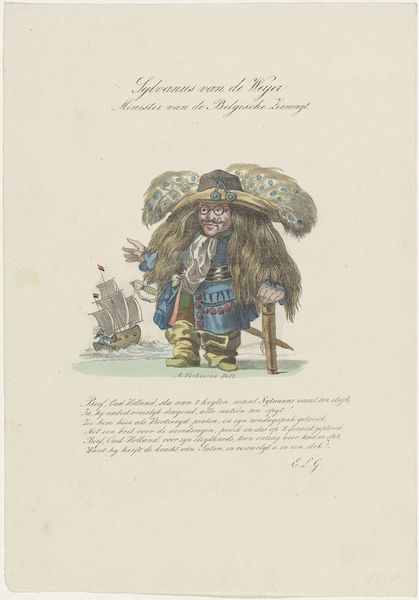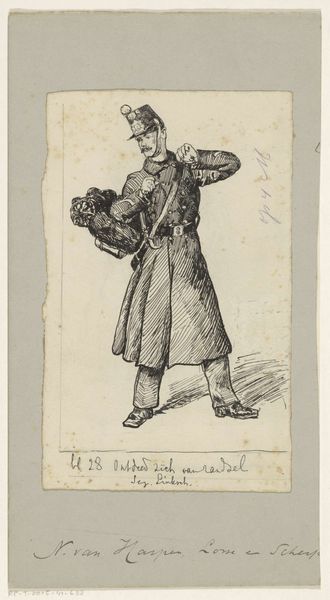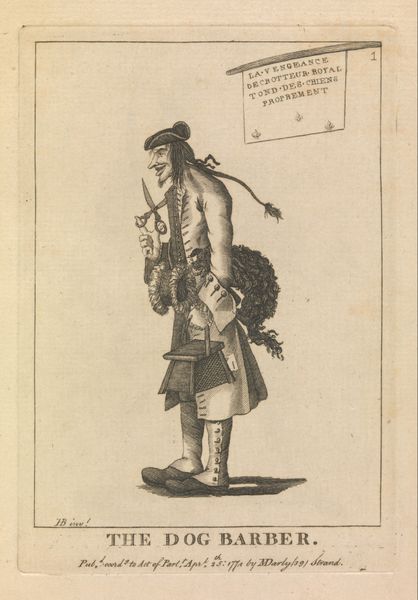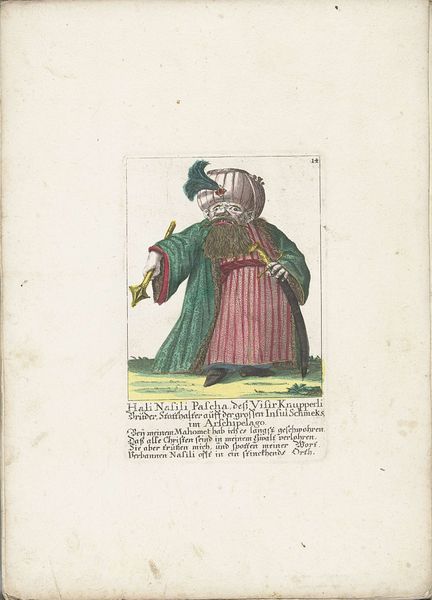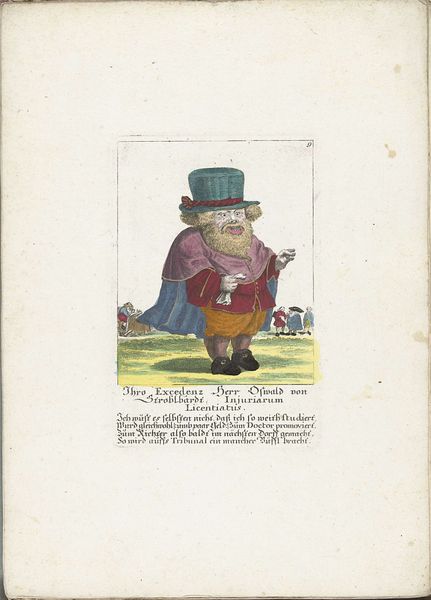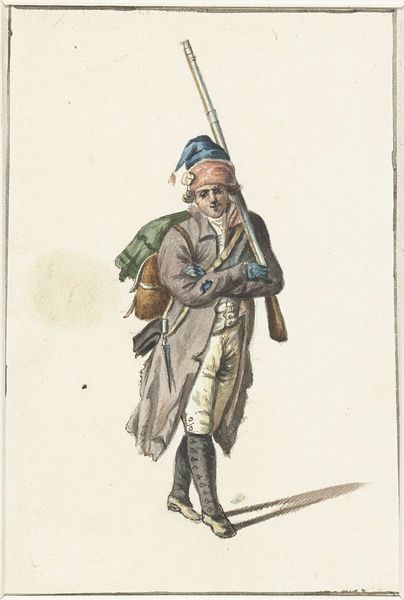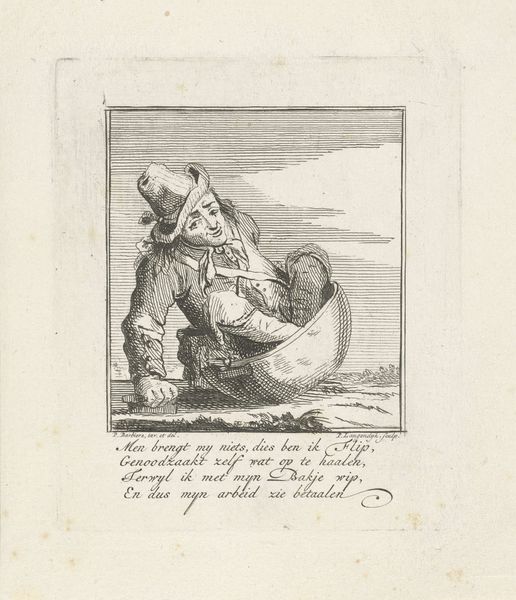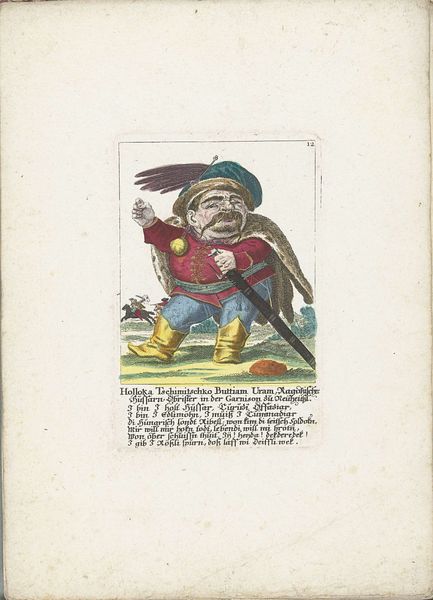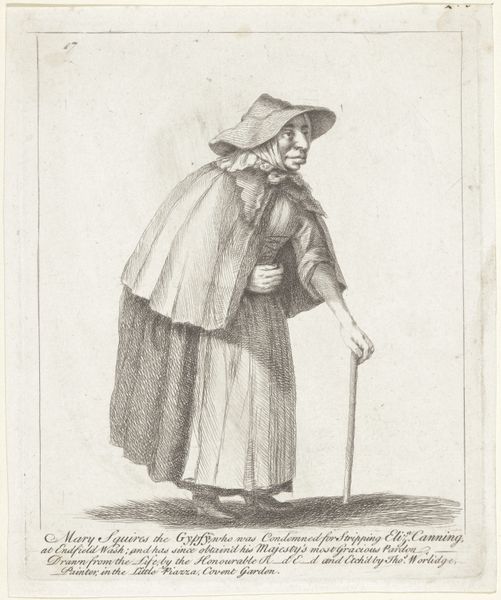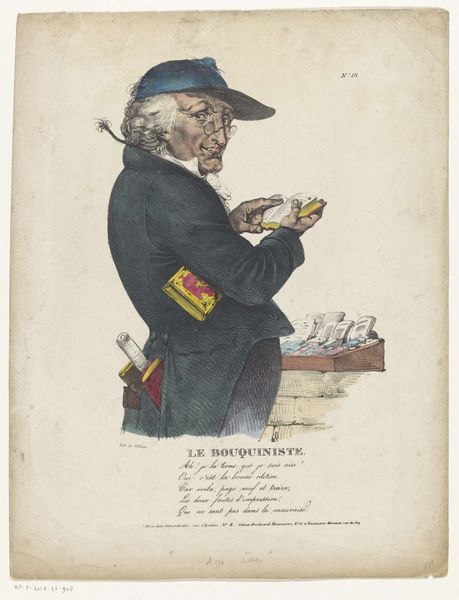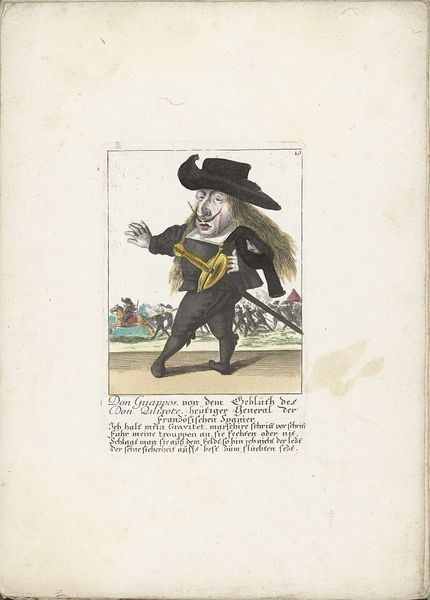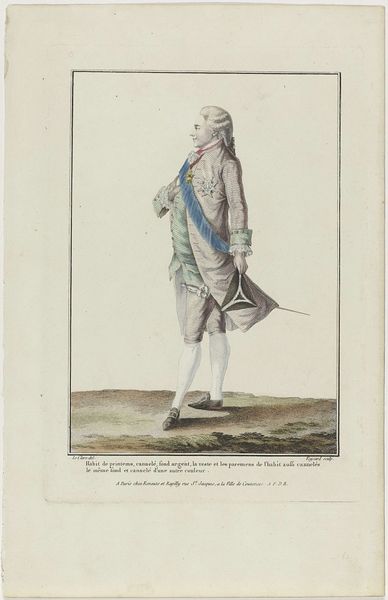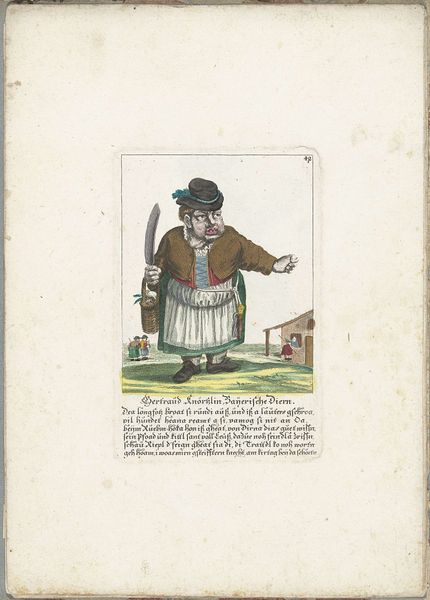
drawing, watercolor, pen
#
portrait
#
drawing
#
imaginative character sketch
#
quirky illustration
#
childish illustration
#
caricature
#
personal sketchbook
#
watercolor
#
romanticism
#
sketchbook drawing
#
pen
#
character design for animation
#
watercolour illustration
#
storyboard and sketchbook work
#
cartoon carciture
#
sketchbook art
Dimensions: height 265 mm, width 185 mm
Copyright: Rijks Museum: Open Domain
Editor: This is a satirical watercolor drawing titled "Spotprent op Charles Rogier," made around 1830 by Albertus Verhoesen. It depicts a rather… unique character. There's a definite element of caricature, with exaggerated features. I'm curious about the context of this work. How should we interpret this political cartoon? Curator: Well, to understand this caricature, we need to consider the sociopolitical climate of the 1830s. Charles Rogier was a prominent figure in the Belgian Revolution. Cartoons like this one weren't just simple drawings; they were powerful tools for shaping public opinion and, quite frankly, attacking reputations. Do you notice how Verhoesen uses the figure's posture to emphasize certain… less flattering aspects? Editor: Yes, his short stature and that very prominent nose! And he seems to be presenting a document. Is that meant to symbolize something specific? Curator: Absolutely. The document he's holding, combined with his smug expression, suggests a critique of his political maneuvers. Remember, visual satire often uses exaggeration to highlight perceived flaws. Who was the piece intended for? Editor: I would think a general audience already skeptical of Rogier’s politics would be more easily convinced through caricature. Curator: Precisely! Consider where this piece was displayed, how it was circulated – maybe in pamphlets or prints. The museum context gives it a different meaning today than it had back then as a readily disseminated piece of social criticism. Editor: I never really thought about art as a method of critique. Seeing it as something distributed to reinforce existing biases makes a lot of sense. I'm starting to see this piece as less of a historical portrait and more of a pointed commentary! Curator: It’s about unearthing the social narratives behind what appears to be just an image.
Comments
No comments
Be the first to comment and join the conversation on the ultimate creative platform.
